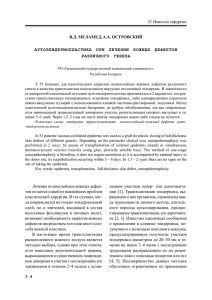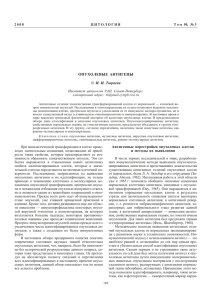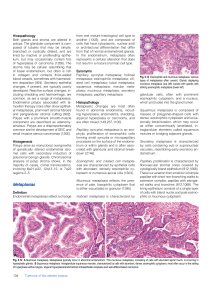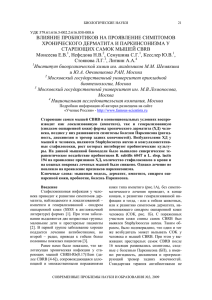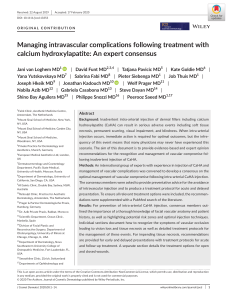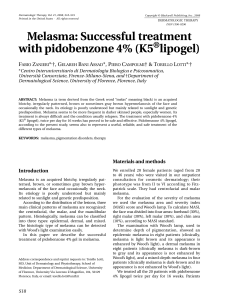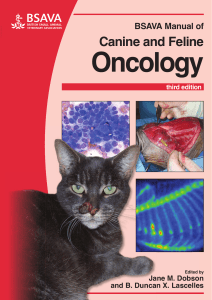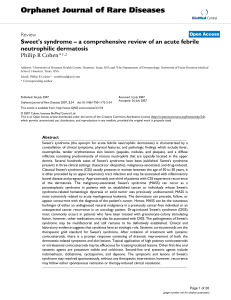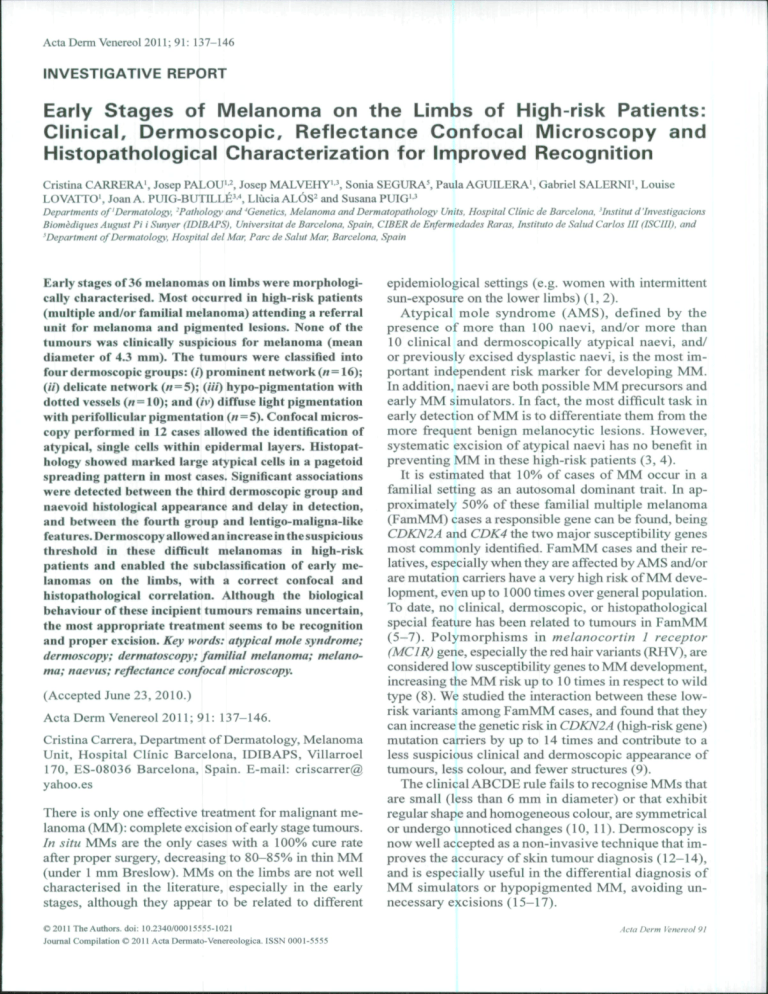
Acta Derm Venereol 2011; 91: 137-146
INVESTIGATIVE REPORT
Early Stages of Melanoma on the Limbs of High-risk Patients:
Clinical, Dermoscopic, Reflectance Confocal Microscopy and
Histopathological Characterization for Improved Recognition
Cristina CARRERA', Josep PALOU'^ Josep MALVEHY' \ Sonia SEGURA', Paula AGUILERA', Gabriel SALERNl', Louise
LOVATTO', Joan A. PU1G-BUTILLÉ^\ Llùcia ALÓS^ and Susana PUIG'^
Departments of Dermatoiog)', -Patholog}' and ^Genetics. Melanoma and Dermatopathology Units, Hospital Clinic de Barcelona, 'Institut d'lnvestigacions
Biomèdiques Augii.it Pi i Sunyer (IDIBAPS), Universität de Barcelona, Spain, CIBER de Enfermedades Raras, Instituto de Salud Carlos II! (ISCIII), and
'Department of Dermatology, Hospital del Mar, Pare de Salut Mar, Barcelona, Spain
epidemiological settings (e.g. women with intermittent
Early stages of 36 melanomas on limbs were morphologisun-exposure on the lower limbs) (1,2).
cally characterised. Most occurred in high-risk patients
(multiple and/or familial melanoma) attending a referral
Atypical mole syndrome (AMS), defined by the
presence of more than 100 naevi, and/or more than
unit for melanoma and pigmented lesions. None of the
10 clinical and dermoscopically atypical naevi, and/
tumours was clinically suspicious for melanoma (mean
or previously excised dysplastic naevi, is the most imdiameter of 4.3 mm). The tumours were classified into
four dermoscopic groups: (/) prominent network (/>= 16); portant independent risk marker for developing MM.
In addition, naevi are both possible MM precursors and
(/7) delicate network (« = 5); (//7) hypo-pigmentation with
early MM simulators. In fact, the most difficult task in
dotted vessels (/;= 10); and (iv) diffuse light pigmentation
early detection of MM is to differentiate them from the
with perifollicular pigmentation (/f = 5). Confocal microsmore fi-equent benign melanocytic lesions. However,
copy performed in 12 cases allowed the identification of
systematic excision of atypical naevi has no benefit in
atypical, single cells within epidermal layers. Histopatpreventing
MM in these high-risk patients (3, 4).
hology showed marked large atypical cells in a pagetoid
It
is
estimated
that 10% of cases of MM occur in a
spreading pattern in most cases. Significant associations
familial
setting
as
an autosomal dominant trait. In apwere detected between the third dermoscopic group and
proximately
50%
of
these familial multiple melanoma
uaevoid histological appearance and delay in detection,
(FamMM)
cases
a
responsible
gene can be found, being
and between the fourth group and lentigo-maligna-like
CDKN2A
and
CDK4
the
two
major
susceptibility genes
features. Dermoscopy allowed an increase in the suspicious
most
commonly
identified.
FamMM
cases and their rethreshold in these difficult melanomas in high-risk
latives,
especially
when
they
are
affected
by AMS and/or
patients and enabled the subclassification of early meare
mutation
carriers
have
a
very
high
risk
of MM develanomas on the limbs, with a correct confocal and
lopment,
even
up
to
1000
times
over
general
population.
histopathological correlation. Although the biological
To
date,
no
clinical,
dermoscopic,
or
histopathological
behaviour of these incipient tumours remains uncertain,
special feature has been related to tumours in FamMM
the most appropriate treatment seems to be recognition
and proper excision. Key words: atypical mole syndrome; (5-7). Polymorphisms in melanocortin I receptor
dermoscopy; dermatoscopy; familial melanoma; melano- (MCIR) gene, especially the red hair variants (RHV), are
considered low susceptibility genes to MM development,
ma; naevus; reflectance confocal microscopy.
increasing the MM risk up to 10 times in respect to wild
type (8). We studied the interaction between these low(Accepted June 23, 2010.)
risk variants among FamMM cases, and found that they
Acta Derm Venereol 2011; 91: 137-146.
can increase the genetic risk in CDKN2A (high-risk gene)
mutation carriers by up to 14 times and contribute to a
Cristina Carrera, Department of Dermatology, Melanoma
less suspicious clinical and dermoscopic appearance of
Unit, Hospital Clinic Barcelona, IDIBAPS, Villarroel
tumours,
less colour, and fewer structures (9).
170, ES-08036 Barcelona, Spain. E-mail: criscarrer@
yahoo.es
i
The clinical ABCDE rule fails to recognise MMs that
are small (less than 6 mm in diameter) or that exhibit
There is only one effective treatment for malignant meregular shape and homogeneous colour, are symmetrical
lanoma (MM): complete excision of early stage tumours.
or undergo unnoticed changes (10, 11). Dermoscopy is
now well accepted as a non-invasive technique that im¡n situ MMs are the only cases with a 100% cure rate
proves the accuracy of skin tumour diagnosis (12-14),
after proper surgery, decreasing to 80-85% in thin MM
(under 1 mm Breslow). MMs on the limbs are not well and is especially useful in the differential diagnosis of
MM simulators or hypopigmented MM, avoiding uncharacterised in the literature, especially in the early
necessary excisions (15-17).
stages, although they appear to be related to different
O20II The Authors, doi: 10.2340/00015555-102t
Journal Compilation C 2011 Acta Dermato-Venereologica. ISSN 0001-5555
.Ada Derm Venereol 91
138
C Carrera et ai
In vivo réflectance-mode laser scanning confocal
microscopy (RCM) is a non-invasive imaging technique
that allows real-time skin examination at high resolution
and thus improves the diagnostic accuracy in MM and
other non-melanocytic tumours (18-20).
We performed a retrospective study of 36 very early
MMs on limbs. The objectives of this study were: (0 to
describe the dermoscopic and in vivo RCM features in
order to improve their future recognition; (//) to correlate
these findings with histopathological characteristics of
the tumours that could suggest different types of early
MM on the limbs in these very early stages.
MATERIALS AND METHODS
A systematic retrospective review of all thin MMs located on
limbs diagnosed in a specialised Pigmented Lesion Unit of a
referral hospital between 2005 and 2008.
The inclusion criteria were: (/) thin MM (< 1 mm Breslow)
proven by histopathological examination, located on limbs;
(í7) clinical, dermoscopic and histopathologieal data available;
and (/;;) clinically unsuspicious for MM, defined by no clinieal
ABCD criteria fulfilled.
Complete clinieal patient history was recorded, including
familial history, previous melanoeytic lesions excised and other
Fig.
I I)^'nn.>,,.-'|M,
.'11 H i p 1 : a t y p i c a l m i w o r k
MM-assoeiated risk factors. Genetic studies were performed
when DNA was available. Exons lalfa, lbeta, 2 and 3, intronic
changes IVS2-105 and -34G>T in the CDKN2A promoter, and
exon 2 from CDK4 were studied by PCR single-strand conformation polymorphism (PCR-SSCP) analysis and sequencing (7).
MCIR was studied by direct sequencing (9).
Clinical and dermoscopic images were taken using digital
cameras (Olympus Camedia, Canon G7 and/or Nikon Coolpix
4500) and a polarised dermatoscope (DermlitePhoto*; 3 GEN,
LLC.Dana Point, CA, USA).
In the ease of the high-risk patients
included in our digital follow-up protocol (21), Mole Max II
(Dermamedical Instruments®), able to detect digital clinieal
and/or dermoscopie changes in a 6-month follow-up, was an
additional tool used in the study. Clinical evaluation was based
on ABCDE criteria and dermoscopic pattern analysis (22).
Whenever possible, in vivo RCM examination was performed
with near-infVared reflectance eonfoeal laser scanning mieroseopes (Vivascope 1500®; Lueid Ine., Henrietta, NY, USA). The
instruments and acquisition procedures, as well as the features
studied, have been described previously (23).
Conventional haematoxylin-eosin staining and immunohistoehemistry (Melan A, HMB45, Ki67) were performed whenever
it was considered necessary. Histopathologieally, MMs were
classified into one of the following groups according to their
eharaeteristies:
• Naevoid MM: predominance of nesting pagetoid invasion of
the upper layers of epidermis over solitary cells.
• Paget's disease-like MM: characterised by atypical large
I \ , i i n | ' k ^ ^-l í [ i i o L i i u n n a s l i i i i i i y r n u p I . A l , B l , C l : c l i n i c a l a s p e c t : l i K ; i u - d c i i l o \ \ c i \ \ u \ h : , . s m a l l
dark
brown lesions, with no malignant criteria A2, B2, C2: dermoscopic images (original magnification x 30). Prominent network pattern, with 2 colours and
asymmetrical pigment distribution. Case A is completely asymmetrical in 1 axis. A3, B3, C3: histopathological examination (x20 (B3) and x40 (A3, B3
inset and C3)). Proliferation of atypical large melanocytes, both solitary and forming discrete nests, in junctural and intraepidermal layers. These 3 cases
were in situ malignant melanoma.
Acta Derm Venereol 91
Early stages of melanoma on the limbs
epithelioid cells invading the whole epidermis resembling
genuine Paget's disease.
• Lentiginous MM: melanocytic hyperplasia, with severe architectural atypia and intraepidermal spreading. Small nests
can be found on the bottom of rete ridges.
• Lentigo maligna-type: atypical melanocytic proliferation
along a faded dermal-epidermal junction and flattened
epidermis, with solitary and small nests invading the upper
epidermis and characteristic follicular involvement. It may
be associated with marked actinic damage.
Statistical evaluation was carried out using SPSS statistical
software package for Windows (version 16.0; SPSS Inc., Chicago,
IL, USA). A chi-square test was applied for all category features,
and Fischer's exact test was applied if any expected cell value in
the 2x2 table was <5. Each group was compared with the other
three. Mean and median values were determined for quantitative
variables and compared using the Student's /-test.
RESULTS
Patient data
Thirty-six tumours from 35 patients in our high-risk
patient-set were reviewed. Tumours were assigned.
139
based on overall appearance in dermoscopic analyses,
to 1 of 4 groups (for details see below - Dermoscopic
examintion): 1, Prominent network (16 tumours, 46%)
(Fig. 1); 2, Delicate network with no specific MM
dermoscopic features (5 tumours, 14%) (Fig. 2). Melanomas were detected by changes in digital follow-up;
3, Hypopigmented with atypical vessels (10 tumours,
28%), (Fig. 3); and Group 4, Diffuse light pigmentation and perifollicular pigmentation (5 tumours, 14%),
(Fig. 4). Patient clinical characteristics are summarised
in Table I.
The most remarkable feature was the predomination
of women {n = 29) over men {n = 6), and the presence of
high-risk MM history, since 40% had familial MM history, 49% personal MM history, and 17% had multiple
primary MMs (MPM) before the current MM diagnosis.
The majority of patients (75%) were affected by atypical mole syndrome. Eighteen had been included in our
digital follow-up high-risk surveillance programme,
which involves total-body photography mapping and
digital dermoscopy of atypical lesions every 6 months,
as described previously by our group (21).
Fig. 2. Dermoscopic group 2: delicate network with changes on digital follow-up. Examples ollhree melanomas from group 2 AI. Bl. Cl: clinical aspect:
located on lower limbs, the smallest lesions had a completely unremarkable aspect. Case A1 and B1 are mother and daughter, both of them CDKN2 A mutation
and double-red-hair-variant-MC 1R carriers, affected by multiple primary malignant melanoma (MM). A2, B2, C2: dermoscopic images (original magnification
X 30). Light-brown very delicate network pattern, with a slight asymmetrical light-brown structureless area in cases A2 and C2 due to a pre-existing naevus.
In all cases the lesions were excised due to changes seen in digital follow-up of a very high-risk patient setting. A3, B3. C3 histopathological examination
(x20). Proliferation of atypical large melanocytes, both solitary and forming nests, in junctural and intraepidermal layers. All were in situ MM. Note the
immunohistochemical study in C3 with a more evident pagetoid spreading of Melan-A positive cells.
.Acta Derm Venéreo/ 9/
140
C. Carrera et al.
Fig. 3. Dermoscopic
group 3 : atypical vascular
pattern. Examples of
three melanomas from
group 3. Al, Bl, Cl:
clinical aspect: located on
lower limbs, all achromic
lesions with erythema.
Case C1 : albinism type
OCAl in a 34-year-old
woman, the largest lesion
in the series. A2, B2,
C2: dermoscopic images
(original magnification
X 30). Homogeneous
or unspecific pattern,
only remarkable by
vessels and a lightbrown structureless
pigmentation. Dotted
vessels and whitish linear
structures (chrysalideslike) are the only
noteworthy features. A3,
B3, C3 : histopathological
examination (x 20).
Lentiginous hyperplasia
of atypical melanocytes,
with mild pagetoid
spreading and marked
vascular hyperplasia.
V
Ada Derm Venereol 91
Fig. 4. Dermoscopic
group 4: perifollicular
pigmentation. Examples
of three in situ melanomas. Al, Bl, CI:
clinical aspect: located
on lower limbs, the only
remarkable feature was
irregular borders. A2, B2,
C2: dermoscopic images
(original magnification
)< 30). Light-brown
structureless pigmentation, withthinand broken
pigmented network, and
focal hyperpigmentation
in case 2. Note some
irregular follicular openings (arrows). A3, B3,
C3: histopathological
examination (x 20).
Flattened epidermis,
with variable elastosis,
and proliferation of
dendritic melanocytes
in both the basal and
suprabasal layers.
Note the remarkable
pagetoid spreading in
immunohistochemistry
image (A) (Melan-A
staining).
Early stages of melanoma on the limbs
141
Table I. Clinical features ofthe 35 patients included in this series. Patients were assigned to I of 4 groups based on the dermoscopic
characteristics of their tumours: J, "Prominent network": 2, "Delicate network with no specific MM dermoscopic features"; 3,
"Hypopigmented with atypical ves.^els ": and 4, "Diffuse light pigmentation andperifollicular pigmentation ". CDKN2A/CDK4 mutation
status was assessed in 21 ofthe 35 patients. MCIR variants were studied in 20 patients. Multiple malignant melanoma (MM) : 2 or more
melanomas diagnosed before the present case. Familial MM: 2 or more melanoma cases among first-degree relatives.
Group 2
n=4
Group 3
«=10
Group 4
«=5
Total
« = 35
15(94)
1(6)
44.7 ±14.0
12(75)
7(44)
8(50)
2(12)
6(37)
8(50)
4/8 (50)
4(100)
0(0)
40.4 ± 14.7
4(100)
3(75)
4(100)
3(75)
4(100)
4(100)
3/4 (75)
6(60)
4(40)
49 ±19.3
8(80)
6(60)
4(40)
1(10)
2(20)
8(80)
1/7(14)
4(80)
1(20)
50 ±8.3
2(40)
1(25)
2(40)
0(0)
2(40)
2(50)
0/2(0)
29(83)
6(17)
46 ±15.4
26(75)
17(49)
18(51)
6(17)
14(40)
21(38)
8/21 (38)
6/8 (75)
4/8 (50)
0/8 (0)
3/3(100)
3/3(100)
2/3 (66)
Group 1
Patient characteristics
Sex. n (%)
Kemale
Male
Age (years), mean ± SD
Atypical mole syndrome, n (%)
Previous MM, n (%)
Digital follow-up, n (%)
Multiple MM, n (%)
Familial MM, n (%)
Genetic studies performed, n (%)
CDKN2A/CDK4 mutation/studied, n (%)
MClR/studied,w(%)
Any variant
Red hair variants
More than one variant
M=16
8/8(100)
5/8 (62)
5/8 (62)
1/1 (100)
1/1 (100)
0/1 (0)
18/20(90)
10/20(50)
7/20(35)
SD: standard deviation. Note: one patient in group 2 presented with 2 tumours.
Genetic studies. All patients with familial and/or MPM
were investigated for major susceptibility MM genes
(CDKN2A, pl4arf, CDK4) (as well other patients
whose DNA was available). Explicit permission
was obtained from all patients tested. Eight of the
21 patients whose CDKN2A loci were studied were
found to be carriers of known mutations. Six carried
the G101W exon 2 mutation (7), the most common in
our study population. Polymorphisms in the MCIR
gene were studied in 20 patients; only 2 of them were
wild-type. At least one functional variant was detected
in 18 patients, more than one variant in 7, and 13
cases were red hair variant (RHV) carriers and 2 of
them had a double RHV polymorphism.
Tumour data
Most ofthe tumours (« = 33, 92%) were located on
lower limbs, mainly below the knee (« = 28, 78%). All
were less than 6 mm in diameter (except for 2 lesions,
7 and 8 mm in diameter, both lacking pigment, one of
them in a patient affected by oculo-cutaneous albinism
type 1). The median diameter was 4.3 mm (SD 1.12
mm, range 3-8 mm). On clinical examination none of
them fulfilled ABCD criteria for MM suspicion. Only
15 lesions showed mild asymmetry; none presented
more than two colours, and borders were slightly irregular in 7 cases.
Dermoscopic examination
Most of the tumours showed two colours and asymmetry in one axis. However, 14 were completely symmetrical and 7 were monochromic. The most frequent
overall pattern was reticular pigmented (21 tumours).
and no lesion showed a multi-component pattern.
An atypical pigmented network was detected in 15
cases, irregular pigment distribution was observed in
20 cases, and atypical vessels in 10 cases. Other worrying, but infrequent, dermoscopic features observed
are detailed in Table II.
Based on overall appearance in dermoscopic analyses,
tumours were classified into 4 groups (see above):
• Prominent network, characterised by atypical prominent pigmented network with broadened lines and
narrow holes.
• Delicate network with no specific MM dermoscopic
features.
• Hypopigmented with atypical vessels, with no classical features of MM, but little or no pigment, and dotted vessels and inverse network in several cases.
• Diffuse light pigmentation and perifollicular pigmentation, simulating solar lentigo but with irregular
pigmentation of follicule-openings.
Reflectance confocal microscopy (RCM) examination
All the evaluated lesions («=12) were suspicious for
melanoma using the second-step algorithm previously
described by our group (24). Positive criteria for
melanoma were the presence of a pagetoid spread of
atypical cells in 8 cases, being roundish in 6 cases, and
dendritic in 4 (2 cases showed both cell types) (Fig.
5); the presence of non-edged papillae in eight cases;
and the presence of atypical cells in the basal layer in
4 cases and in the dermal papilla in 3.
In the dermis, non-nucleated dermal cells (plump
cells) were observed in 4 cases, related to the presence of
blue regression (peppering) or melanophages in intense
pigmented lesions. Vessels were identified in 2 cases.
Acta Derm Venéreo! 91
142
C. Carrera et al.
Table II. Clinical and dermoscopic examination of 36 tumours classified by dermoscopic group.
Clinical tumour features
Site, n (%)
Lower limbs
Upper limbs
In situ malignant melanoma, n (%)
Ugly duckling sign, n (%)
Size, mm, mean ± SD
Clinical asymmetry, n (%)
One colour, n (%)
Two colours, n (%)
Irregular borders, n (%)
Dermoscopic tumour features, n (%)
Asymmetry in one axis, n (%)
Only one colour, « (%)
Two colours, n (%)
More than two colours, n (%)
Reticular pattern, n (%)
Globular pattern, n (%)
Non-specific global pattern, n (%)
Atypical network, n (%)
Irregular globules, n (%)
Radial streaks /pseudopods, n (%)
Hyper/hypopigmented irregular areas, « (%)
Irregular blotches, n (%)
Dotted vessels, n (%)
Regression features, n (%)
Perifollicular pigmentation, n (%)
Negative/inverse network, n (%)
Group 1
«=16
Group 2
«=5
Group 3
«=10
Group 4
«=5
Total
« = 36
16(100)
0(0)
13 (72)
1(6)
4.12±0.9
9(56)
4(25)
12(75)
4(25)
5(100)
0(0)
5(100)
0(0)
3.6 ±0.9
3(60)
2(40)
3(60)
0(0)
7(70)
3(30)
5(50)
1(10)
5±1.4
2(20)
7(70)
3(30)
0(0)
5(100)
0(0)
5(100)
0(0)
4.410.9
1(20)
3(60)
2(40)
3(60)
33(92)
3(7)
28(78)
2(5)
4.3±1.12
15(42)
16(45)
20 (56)
7(20)
11(70)
0(0)
13(72)
3(18)
14(88)
1(6)
1(6)
14(88)
5(31)
4(25)
7(44)
3(18)
1(6)
3(18)
1(6)
0(0)
3(60)
2(40)
3(60)
0(0)
5(100)
0(0)
0(0)
0(0)
0(0)
0(0)
2(40)
0(0)
0(0)
1(20)
0(0)
0(0)
5(50)
4(40)
5(50)
1(10)
0(0)
1(10)
9(90)
1(10)
3(30)
1(10)
7(70)
0(0)
9(90)
1(10)
0(0)
3(30)
3(60)
1(20)
4(80)
0(0)
2(40)
0(0)
3(60)
22 (60)
7(20)
25(69)
4(11)
21(58)
2(5)
13(35)
15(42)
8(22)
5(16)
20 (56)
7(20)
10(29)
6(17)
5(16)
3(8)
with tortuous morphology corresponding to atypical
vessels seen under dermoscopy.
Dermoscopic features were the main reason for excision in 31 cases; the remaining 5 cases (dermoscopic
group 2) were excised due to minimal changes on digital
follow-up in a very-high-risk patient set, despite an
unsuspicious clinical and dermoscopic appearance.
0(0)
0(0)
0(0)
4(80)
4(80)
0(0)
1(20)
5(100)
0(0)
Histopathological study
All lesions were evaluated, by 2 independent pathologists (JP and LA).
Twenty-eight tumours (80%) were in situ MMs, and
the remaining 8 were micro-invasive MMs, Clark II in
5 cases and Clark III in 3 cases. The median Breslow
index in these was 0.5 mm. There were only 5 cases
Table III. Histopathological examination of 36 tumours classified by dermoscopic group. Column headings indicate total numbers and
percentages. Note that it was not possible to review the histopathological features of one tumour in group I (total of35 tumours examined),
unlike in the clinical/dermoscopic diagnosis (all 36 tumours studied).
Histopathological features
Histological classification
Naevoid malignant melanoma
Pagetoid malignant melanoma
Lentiginous malignant melanoma
Lentigo malignant melanoma-like
Naevus-associated
Marked nest tendency
Marked lentiginous melanocytic hyperplasia
Marked pagetoid spreading
Marked vascular hyperplasia
Marked inflammatory infiltrates
Atypical large cells
Atypical epithelioid-like cells
Histological diagnosis
Clark I
Clark II
Clark III
Mean Breslow thickness (8 cases), mm
Ada Derm lenereol 91
Group 1
n=15
Group 2
n=5
Group 3
n=10
Group 4
n=5
Total
« = 35
4(27)
8(54)
3(20)
0(0)
2(13)
5(33)
5(33)
10 (66)
1(7)
4(27)
6(40)
11(73)
2(40)
2(40)
1(20)
0(0)
1(20)
3(60)
1(20)
4(80)
1(20)
1(20)
2(40)
3(60)
7(70)
1(10)
2(20)
0(0)
2(20)
9(90)
4(40)
6(60)
4(40)
7(70)
2(20)
8(80)
0(0)
0(0)
0(0)
1(20)
3(60)
13(38)
11(31)
6(17)
5(14)
5(14)
18(51)
13(37)
23(66)
11(31)
12(34)
11(31)
25(72)
13 (90)
2(14)
1(7)
0.41 ±0.1
5(100)
0(0)
0(0)
-
5(50)
3(30)
2(20)
0.56 ±0.05
5(100)
0(0)
0(0)
-
28(80)
5(14)
2(6)
0.50±0.1
0(0)
5(100)
0(0)
1(20)
3(60)
3(60)
0(0)
Early stages of melanoma on the limbs
143
Fig. 5 A: Dermoscopic image of a new pigmented lesion on the knee of a group 2 patient (original magnification x 50). Light-brown, symmetrical pigmented
network. B: In vivo RCM image sequence in a4 x 4 mm mosaic: ringed architecture at the dermo-epidermal junction, with ( x 30) irregular elongated regular rete
ridges with an increased number of refractive cells in the basal layer C and D: 500 x 500 um RCM images. Non-edged papillae: dark dermal papillae irregular
in size and shape (•), without a demarcated rim of bright cells, separated by interpapillary spaces of different thicknesses (A). Scattered atypical junctional
nucleated roundish cells at layer (w/i/Yearrawj), with a single dendritic cell (í/»nye//o»'afroH').E: Histopathological examination (original magnification X 200).
Atypical large and roundish melanocytes in the dermo-epidermal layer corresponding to the highlighted cells in the RCM and histopathological images.
of MM witn a melanocytic neavus associated in histopathological examination.
Based on the histopathological classification of incipient MMs explained in the Materials and Methods, we
were able to divide our cases into groups and to study their
possible associations with different dermoscopic groups
(Table III). Thirteen cases were classified as naevoidlike MM, with statistically significant associations with
marked nesting (/?< 0.001) and marked vascular hyperplasia (p< 0.05). Eleven cases were classified as pagetoid
MM-type, with marked pagetoid invasion of the epidermis, and association with very large roundish atypical
cells in most cases {p<0.03). Six cases were considered
lentiginous MM-type, with this characteristic architecture
as the most remarkable feature. And the remaining 5 cases
were classified as lentigo-maligna-like MMs. However,
not all of these 5 cases showed signs of elastosis.
Defining features of each dermoscopic group
Thefirstgroup (atypical prominent network) was associated with lesions that were clinically and dermoscopically
more pigmented and polychromie (p<0.05). In vivo RCM
demonstrated that 4 lesions presented striking pagetoid
spreading of atypical cells. Histopathologieally, group 1
was associated with the most marked pagetoid spreading
of atypical solitary cells, so-called Pagetoid-type MM (8
cases, 54% of this group,/7=0.02). The diagnosis was in
situ MM in 13 cases (90%) (Table IV).
The second group (delicate light-brown pigmented
network) contained the smallest tumours (mean diameter 3.6 mm), with weak pigmentation, which explains in
part the unremarkable aspect of these incipient tumours,
and is congruent with MCIR variants status. The 3
patients studied had red hair and multiple variants in
MCIR. Confocal detection of pagetoid cells within the
upper epidermis aided the diagnosis in 3 cases. All were
in situ MMs (Table IV).
The third group (hypopigmented or achromic lesions
with atypical vasculature) was the second most frequent
pattern, and the only one detected in MM located on
upper limbs (30% vs. 0%). The mean size of lesions was
slightly larger than the other groups (5 mm ±1.4 mm),
and in two cases the tumour was the reason for consultation because of erythema and pruritus. Most lesions
(90%) showed an unspecific overall dermoscopic pattern
Acta Derm Venereol 91
144
C Carrera et al.
Table IV Characterisation of each malignant melanoma (MM) subgroup. For each group, the most remarkable features are listed.
Characteristic features
Group 1 (16patients, 16 tumours)
Female
> 1 colour clinically
> 1 colour dermoscopically
Network global pattern
Atypical network
¡n situ MM
Pagetoid-type MM (histopathological)
Group 2 (4 patients, 5 tumours)
Female
Multiple primary MM
Familial multiple MM
Diameter (mm), median (SD)
Network global pattern
Diagnosed by changes in digital FU
In situ MM
Group 3 (10 patients, 10 tumours)
Male
Muhiple MCIR variants
Upper limbs
Only one colour clinically
Only one colour dermoscopically
Non-specific global pattern
Dotted vessels
Inverse negative network
Invasive MM
Naevoid-type MM
Marked nested tendency
Marked vascular hyperplasia
Marked inflammatory infiltrates
Group 4 (5 patients, 5 tumours)
Female
Irregular borders clinically
Irregular blotches dermoscopically
Perifollicular pigmentation
In situ MM
Lentigo-type MM (histopathological)
« (%)"
Significance
(Fisher's exact test)
15(94)
12(75)
16(100)
14(88)
14(88)
13(90)
8(54)
NS
0.04
<0.05
0.01
0.01
NS
0.02
4(100)
3(75)
4(100)
3.6 (0.09)
5(100)
5(100)
5(100)
NS
<O.OI
<0.03
NS (Student's i-test)
<0.01
<0.001
NS
4(40)
5 (62)^
3(30)
7(70)
4(40)
9(90)
9(90)
3(30)
5(50)
7(70)
9(90)
4(40)
7(70)
0.04
0.05
0.02
<0.05
<0.05
0.01
0.01
<0.05
0.03
0.01
<0.05
0.05
0.01
4(80)
3(60)
4(80)
5(100)
5(100)
5(100)
NS
0.03
0.01
<0.001
NS
<0.001
'Unless otherwise indicated. ''Five cases out of 8 studied.
NS: not significant in Fisher's exact test analysis. FU: follow-up.
(/7< 0.001 ) and atypical vascularisation, with dotted vessels (/7< 0.001). In addition 3 cases (30%) presented an
inverse network (p<0.05). This group comparing with
the other 3, contains the most invasive tumours {in situ
MM: 50% vs. 88% in the remaining groups,/><0.03;
Clark II/III: 50% vs. 9% in the other groups,/?< 0.01).
The third group was statistically associated with the histopathological naevoid MM type (p= 0.01), and it was
also possible to observe a marked vascular hyperplasia
and inñammatory infiltrates (Table IV).
In the fourth group (light-brown structureless and
perifollicular pigmentation), a solar lentigo appearance
with irregular borders (3 cases) was the most remarkable
clinical feature. The dermoscopy criterion for suspicion
was pigmentation of the perifollicular openings over
a lighter brown structureless pigmentation. These 5
tumours were in situ MM with atypical cells invasion
of follicles similar to lentigo-maligna-MM but without
extensive elastosis (Table IV).
Acta Derm Venéreo/ 91
DISCUSSION
Based on this review, mainly dermoscopy, sometimes
aided by digital follow-up (DFU) and/or RCM, allowed
the excision of 36 early MMs on limbs with unsuspicious clinical aspects.
Our aim was to characterise in vivo and ex vivo thin
MMs on limbs diagnosed over the last 3 years in our
unit. A large proportion ofthe patients in this series belong to a very high-risk MM setting: 49% were affected
by previous MPM, 40% had a FamMM syndrome and
75% were affected by AMS. These data are consistent
with a population attending a specific pigmented lesions
unit in a referral hospital such as ours. The proportion
of female patients cannot be explained on the basis of
FamMM or MPM (7) and is consistent with the predominant incidence of melanoma on the lower limb
in females and on the trunk in males in our general
population, as is the case in most countries.
Both primary and secondary prevention strategies
are especially important in these families, as the risk
of MM may reach 1000 times that in the general population. Early detection of MM without an increase
in unnecessary excisions is important in these cases
(4-7). To date, the only way to identify this population
is through their medical history. However, it would be
of great interest to find special clinical, dermoscopic
or histopathological features for tumours that form as
a result of genetic factors. It has been demonstrated
that dermatological surveillance programmes involving
total-body photography, digital dermoscopy and /« vivo
RCM are feasible and allow early diagnosis of most in
situ or micro-invasive MMs, thus avoiding unnecessary
excision of benign lesions (optimal ratio benign/malignant) (4, 20, 21, 25). Genetic studies in MM families
facilitate the identification of high-risk non-affected
individuals who may benefit from specific surveillance
programmes. FamMM is a potential pathological candidate for genetic counselling (5-7).
The gender and location ofthe tumours in this series
agree with the well-established higher prevalence of
MM on the lower limbs in women (26-28). We also
found a higher proportion of male cases among the few
upper limb MMs included.
Clinically all lesions were very small and not intensely pigmented, and the clinical "ugly duckling" sign
only helped to identify them in only 2 cases. Our series
showed that incipient MMs do not usually present the
classical malignant appearance and therefore do not fulfil
the ABCD criteria. We should, however, assume it is a
feasible and useful tool for MM screening among the
general population and for use by general practitioners,
but not acceptable for use by dermatologists. This clinically unremarkable appearance and the lack ofthe "ugly
duckling" sign in the majority of cases, reminds us that
it is important not to clinically pre-select lesions for der-
Early stages of melanoma on the limbs
moscopy (29), especially in high-risk patients. Recently,
Zalaudek et al. (30) demonstrated that the time needed for
complete skin examination aided by dermoscopy is only
one minute longer than for that without, and complete
examination with dermoscopy, even in cases with a high
naevi count, took approximately 3 min.
In dermoscopic analysis none of our cases showed
a multi-component pattern, or marked asymmetry in
structure or pigmentation, which are considered clues
for recognising MM. This emphasises the importance
of finding other dermoscopy features in these early and
difficult lesions, such as those we propose in this series,
for small, symmetrical and hypopigmented lesions
(15-17,31,32).
The main open question regards the potential malignant behaviour of these tumours. Obviously, the only way
to truly demonstrate the malignant nature of a melanocytic lesion is through the development of metastasis.
However, the clinical/dermoscopic and histopathological
morphological features of a tumour are usually sufficient
to make a diagnosis. As we are now detecting tumours at
such an early stage, it is difficult to observe the classical
and marked malignant features of more advanced MM.
On the other hand, it may be possible that these lesions
would never evolve to more invasive MM. Khalifeh et al.
(33) reported a series of 11 atypical melanocytic lesions
on distal lower limbs, especially on the ankle, which they
consider as benign tumours that could be misdiagnosed
as MM in situ. They concluded that these were benign
lesions based on mild cytological atypia, no pagetoid
spreading, and no recurrence after a follow-up period
of between 4 months and 13 years. These cases showed
some similarities to ours, but we found pagetoid invasion
in the epidermis in all cases. A benign outcome in such
lesions is possible. However; observation of only 11
cases is not sufficient to confirm a benign behaviour.
In agreement with previous studies on RCM in MM,
the most frequent features associated with malignancy are
the partial or total loss ofthe honeycomb pattern, pagetoid
spreading of roundish or dendritic cells, and irregular or
non-edged papillae (24, 34, 35). In our series, despite the
unremarkable clinical appearances ofthe 36 tumours, we
were able, based on dermoscopic classification, to establish good correlations between dermoscopic presentation
and confocal and histopathological features. In at least
two cases in which clinical and dermoscopic features were
suggestive of benign lesions or inconclusive, confocal
examination according to a 2-step algorithm recently
described by our group (24) increased our suspicion and
led us to decide on excision instead of follow-up.
Based on our experience, we propose a dermoscopic
classification of the early stages of MM on the limbs
that could help the further investigation of possible
different origins, such as has been proposed in recent
observations regarding cutaneous stem cells (36, 37)
and MM pathways.
|
145
The distribution of in situ MMs among the dermoscopic groups was not uniform. Between 90% and 100%
of cases in groups 1, 2 and 4 were in situ MMs, whereas
50% of MM in group 3 (hypopigmented with atypical
vessels) were in situ MMs. This may be explained by
a delay in diagnosis for more deeply invasive lesions
with lesions with greater diameters, which agrees with
our observation in a study of MCIR polymorphisms,
and which could contribute to a hypopigmented MM
aspect with fewer dermoscopic features, thus implying
a more difficult early diagnosis (9).
In conclusion, we reviewed 36 cases of very early MMs
on the limbs. None of these cases could have been diagnosed by clinical examination alone. Dermoscopy aided by
digital follow-up and occasionally by confocal microscopy
encouraged us to excise these clinically unsuspicious lesions. The limitation of this retrospective series is that it
is not possible to compare these morphological features
with those of excised benign lesions, or to confirm the
future malignant behaviour of these incipient tumours.
Obviously not all thin MMs will disseminate, and not all
in situ and micro-invasive MMs will become invasive and
life-threatening. However, several ofthe present patients
belong to families affected by FamMM, and unfortunately
some relatives had died from MM-associated metastasis.
Therefore, our aim must be for all MMs in these high-risk
patients to be diagnosed at the in situ stage. Finally, we
can conclude that, despite a banal clinical aspect, melanocytic lesions on the limbs can present some dermoscopic
or confocal features that raise suspicion. All of these
tumours should be removed or have a short-term followup, especially in the case ofthe very high-risk population
attending a referral pigmented lesions unit.
ACKNOWLEDGEMENTS
This work is dedicated to all our willing patients, who have
always collaborated and helped us to itnprove our knowledge of
their disease. We are itidebted to our dertnatologist colleagues,
biologists and nurses, who work together on a daily basis and
whose effort is not always reflected in investigative papers. We
also thank Gillian Randall for her help with the text edition.
This project has been partially supported by Fondo de Investigaciones Sanitarias (FIS), grant 06/0265; Red de Centros
de Cáncer C03/10, ISCIII, and the European Union Network of
Excellence: 018702 and "The Melanoma Genetic Consortium",
National Cancer Institute (National Institute of Health) USA.
The authors declare no conflicts of interest.
REFERENCES
1. Leiter U, Buettner PG, Eigentler TK, Garbe C. Prognostic
factors of thin cutaneous melanoma: an analysis of the
central malignant melanoma registry ofthe German Dermatological Society. J Clin Oncol 2004; 22: 3660-3667.
2. Garbe C, Leiter U. Melanoma epidemiology and trends.
Clin Dermatol 2009; 27: 3-9.
3. Tsao H, Bevona C, Goggins W, Quinn T. The transforAda Derm Venereol 91
146
C. Carrera et al.
mation rate of moles (melanocytic naevi) into cutaneous
melanoma. A population-based estimate. Arch Dermatol
2003; 139: 282-288.
4. Carli P, De Giorgi V, Crocetti E, Mannone F, Massi D,
Chiarugi A, Giannotti B. Improvement of malignant/benign
ratio in excised melanocytic lesions in the "dermoscopy
era' : a retrospective study 1997-2001. Br J Dermatol 2004;
150: 687-692.
5. Bishop JN, Harland M, Randerson-Moor J, Bishop DT.
Management of familial melanoma. Lancet Oncol 2007;
8: 46-54.
6. Bergman W, Gruís NA. Phenotypic variation in familial
melanoma consequences for predictive DNA testing. Arch
Dermatol 2007; 143: 525-526.
7. Puig S, Malvehy J, Badenas C, Ruiz A, Jimenez D, Cuellar
F, et al. Role ofthe CDKN2A locus in patients with multiple
primary melanomas. J Clin Oncol 2005; 23: 3043-3051.
8. Goldstein AM, Chaudru V, Ghiorzo P, Badenas C, Malvehy
J, Pastorino L, et al. Cutaneous phenotype and MC lR variants as modifying factors for the development of melanoma
in CDKN2A GIOIW mutation carriers from 4 countries.
Int J Cancer 2007; 121: 825-831.
9. Cuellar F, Puig S, Kolm I, Puig-Butille J, Zaballos P, MartiLaborda R, et al. Dermoscopic features of melanomas associated with MC 1R variants in Spanish CDICN2A mutation
carriers. Br J Dermatol 2009; 160: 48-53.
10. Wolf IH, SmoUe J, Soy er HP, Kerl H. Sensitivity in the
clinical diagnosis of malignant melanoma. Melanoma Res
1998; 8: 425-429.
11. Goldsmith SM, Solomon AR. A series of melanomas smaller than 4 mm and implications for the ABCDE rule. J Eur
Acad Dermatol Venereol 2007; 21: 929-934.
12. Bafounta ML, Beauchet A, Aegerter P, Saiag P. Is dermoscopy (epiluminescence microscopy) useful for the diagnosis of melanoma? Results of a meta-analysis using
techniques adapted to the evaluation of diagnostic tests.
Arch Demiatol 2001; 137: 1343-1350.
13. Kittler H, Pehamberger H, Wolff K, Binder M. Diagnostic
accuracy of dermoscopy. Lancet Oncol 2002; 3: 159-165.
14. Carli P, de Giorgi V, Chiarugi A, Nardini P, Weinstock MA,
Crocetti E, et al. Addition of dermoscopy to conventional
naked-eye examination in melanoma screening: a randomized study. J Am Acad Dermatol 2004; 50: 683-689.
15. Argenziano G, Zalaudek I, Ferrara G, Johr R, Langford D,
Puig S, et al. Dermoscopy features of melanoma incognito: indications for biopsy. J Am Acad Dermatol 2007;
56:508-513.
16. Puig S, Argenziano G, Zalaudek I, Ferrara G, Palou J, Massi
D, et al. Melanomas that failed dermoscopic detection: a
combined clinicodermoscopic approach for not missing
melanoma. Dermatol Surg 2007; 33: 1262-1273.
17. Menzies SW, Kreusch J, Byth K, Pizzichetta MA, Marghoob
A, Braun R, et al. Dermoscopic evaluation of amelanotic
and hypomelanotic melanoma. Arch Dermatol 2008; 144:
1120-1127.
18. Pellacaini G, Cesinaro AM, Seidenari S. Reflectance-mode
confocal microscopy of pigmented skin lesions-improvement in melanoma diagnostic specificity. J Am Acad
Dermatol 2005; 53: 979-985.
19. Gerger A, Koller S, Weger W, Richtig E, Kerl H, Samonigg H, et al. Sensitivity and specificity of confocal laserscanning microscopy for in vivo diagnosis of malignant
skin tumors. Cancer 2006; 107: 193-200.
20. Pellacani G, Guitera P, Longo C, Avramidis M, Seidenari
S, Menzies S. The impact of in vivo reflectance confocal
microscopy for the diagnostic accuracy of melanoma and
equivocal melanocytic lesions. J Invest Dermatol 2007;
Ada Derm Venereol 91
127: 2759-2765.
21. Malvehy J, Puig S. Follow-up of melanocytic skin lesions
with digital total-body photography and digital dermoscopy:
a two-step method. Clin Dermatol 2002; 20: 297-304.
22. Argenziano G, Soyer HP, Chimenti S. Talamini R, Corona
R, Sera F et al. Dermoscopy of pigmented skin lesions:
results of a consensus meeting via the Intemet. J Am Acad
Dermatol 2003; 48: 679-693.
23. Scope A, Benvenuto-Andrade C, Agero AL, Malvehy J,
Puig S, Rajadhyaksha M, et al. In vivo reflectance confocal
microscopy imaging of melanocytic skin lesions: consensus
terminology glossary and illustrative images. J Am Acad
Dermatol 2007; 57: 644-658.
24. Segura S, Puig S, Carrera C, Palou J, Malvehy J. Development of a two-step method for the diagnosis of melanoma
by reflectance confocal microscopy. J Am Acad Dermatol
2009; 61: 216-229.
25. Kittler H, Guitera P, Riedl E, Avramidis M, Teban L, Fiebiger M, et al. Identification of clinically featureless incipient
melanoma using sequential dermoscopy imaging. Arch
Dermatol 2006; 42: 1113-1119.
26. Clark LN, Shin DB, Troxel AB, Khan S, Sober AJ, Ming
ME. Association between the anatomic distribution of melanoma and sex. J Am Acad Dermatol 2007; 56: 768-773.
27. Cho E, Rosner BA, Colditz GA. Risk factors for melanoma
by body site. Cancer Epidemiol Biomarkers Prev 2005; 14:
1241-1244.
28. Silva Idos S, Higgins CD, Abramsky T, Swanwick MA,
Frazer J, Whitaker LM, et al. Overseas sun exposure,
naevus counts, and premature skin aging in young english
women: a population-based survey. J Invest Dermatol 2009;
129: 50-59.
29. Seidenari S, Longo C, Giusti F, Pellacani G. Clinical selection of melanocytic lesions for dermoscopy decreases
the identification of suspicious lesions in comparison with
dermoscopy without clinical preselection. Br J Dermatol
2006; 154: 873-879.
30. Zalaudek I, Kittler H, Marghoob AA, Balato A, Blum A,
Dalle S, et al. Time required for a complete skin examination
with and without dermoscopy: a prospective, randomized
multicenter study. Arch Dermatol 2008; 144: 509-513.
31. Fikrle T, Pizinger K. Dermatoscopic differences between
atypical melanocytic naevi and thin malignant melanomas.
Melanoma Res 2006; 16: 45-50.
32. Pizzichetta MA, Talamini R, Stanganelli I, Puddu P, Bono
R, Argenziano G, et al. Amelanotic/hypomelanotic melanoma: clinical and dermoscopic features. Br J Dermatol
2004; 150: 1117-1124.
33. Khalifeh I, Taraif S, Reed JA, Lazar AF, Diwan AH,
Prieto VG. A subgroup of melanocytic naevi on the distal
lower extremity (ankle) shares features of acral naevi,
dysplastic naevi, and melanoma in situ: a potential misdiagnosis of melanoma in situ. Am J Surg Pathol 2007; 31:
1130-1136.
34. Scope A, Benvenuto-Andrade C, Agero AL, Halpem AC,
Gonzalez S, Marghoob AA. Correlation of dermoscopic
structures of melanocytic lesions to reflectance confocal
microscopy. Arch Dermatol 2007; 143: 176-185
35. Pellacani G, Longo C, Malvehy J, Puig S, Carrera C, Segura
S, et al. In vivo confocal microscopic and histopathologic
correlations of dermoscopic features in 202 melanocytic
lesions. Arch Dermatol 2008; 144: 1597-1608.
36. Zaiaudek I, Marghoob AA, Scope A, Leinweber B, Ferrara
G, Hofmann-Wellenhof R, et al. Three roots of melanoma.
Arch Dermatol 2008; 144: 1375-1379.
37. Grichnik JM. Melanoma, nevogenesis, and stem cell biology. J Invest Dermatol 2008; 128: 2365-2380.
Copyright of Acta Dermato-Venereologica is the property of Society for Publication of Acta DermatoVenereologica and its content may not be copied or emailed to multiple sites or posted to a listserv without the
copyright holder's express written permission. However, users may print, download, or email articles for
individual use.
